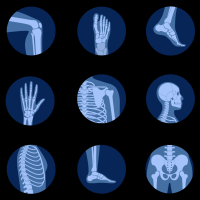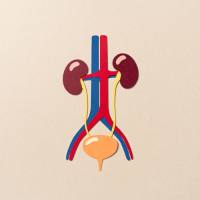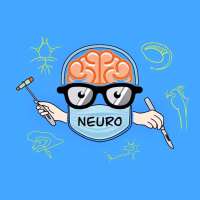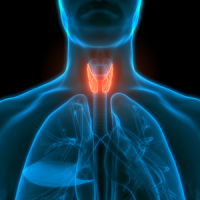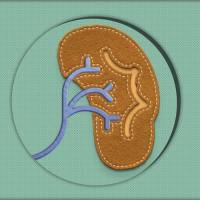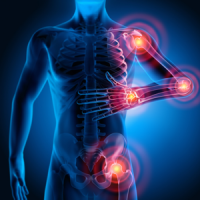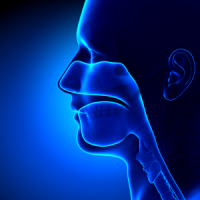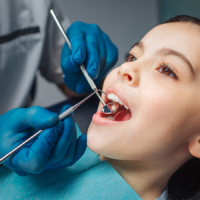美国医学会(特邀述评):新生儿重症监护室内的神经行为——开辟未来之窗?
Invited Commentary
Pediatrics
July 18, 2022
Neurobehavior in the Neonatal Intensive Care Unit—Window to the Future?
Sara B. DeMauro, MD, MSCE1; Stephanie Merhar, MD, MS2
Author Affiliations Article Information
JAMA Netw Open. 2022;5(7):e2222255. doi:10.1001/jamanetworkopen.2022.22255
related articles icon
Related
Articles
Preterm infants are widely recognized to have significantly higher risks of developmental and behavioral problems throughout childhood than infants born at term. Early diagnosis and targeted interventions are increasingly recognized as essential to mitigate the adverse neurodevelopmental sequelae of prematurity. Therefore, research and clinical efforts have turned toward developing strategies to accurately predict which infants will be diagnosed with cognitive, motor, and behavioral problems during childhood. Ideally, these problems should be identified before or soon after discharge from the neonatal intensive care unit (NICU), so that targeted therapies and appropriate family supports can be initiated. For example, neonatal neuroimaging together with early motor evaluations, such as the General Movements Assessment, have been demonstrated to be highly sensitive for prediction of cerebral palsy.1 Unfortunately, with currently available tools, cognitive and behavioral problems have proven to be far more difficult to predict than motor problems. The study by McGowan et al elsewhere in JAMA Network Open, “Analysis of Neonatal Neurobehavior and Developmental Outcomes Among Preterm Infants,”2 takes a step toward achieving the goal of accurate early detection of both developmental and behavioral problems by correlating profiles on the NICU Network Neurobehavioral Scale (NNNS) prior to NICU discharge with developmental and behavioral outcomes at 2 years corrected age. The NNNS is a bedside neurobehavioral examination that includes 45 items administered to the infant in a state-dependent standardized sequence along with observations of the infant’s behavioral responses.3 The NNNS requires substantial training and practice to achieve reliability and certification and takes approximately 15 to 20 minutes to complete. Although the NNNS provides 13 summary scores with published norms for each, most research on the NNNS, including the McGowan study, uses latent profile analysis (LPA) to provide cohort-specific descriptions of neurobehavioral patterns.2
In the study by McGowan et al,2 556 infants born at less than 30 weeks’ gestation at 9 NICUs in the United States were evaluated with the NNNS prior to hospital discharge and then assessed at 2 years’ corrected age with the Bayley Scales of Infant and Toddler Development, third edition (Bayley-III), and the Child Behavior Checklist (CBCL). Infants were classified as high medical risk if they had at least 2 medical morbidities. Infants were classified as high behavioral risk if they had either of 2 (of 6) nonoptimal cohort-specific profiles on the NNNS. The key finding of this study was that infants with high medical and high behavioral risk in the NICU were 4 times more likely to have Bayley-III motor scores less than 85 and 2.7 times more likely to have Bayley-III cognitive scores less than 85 at 2 years’ corrected age than infants with low behavioral and low medical risk. Second, the proportion of infants with CBCL internalizing and total problem scores in the clinical range (ie, atypically high) was twice as high in the group of infants with high behavioral risk than in the group with low behavioral risk on the NNNS. Adjusted risk for behavioral problems was significantly elevated in the high behavioral risk and low medical risk group compared with the low behavioral and low medical risk group.
Given that parents prioritize behavior and emotional health of their formerly preterm children higher than both motor and cognitive development,4 the findings associating the NNNS in the NICU with 2-year behavioral outcomes are particularly compelling. The ability to predict later behavioral problems, particularly in infants with low medical risk, would be a significant advance for both clinicians and parents. However, it remains unclear whether and how behavioral profiles derived from cohort-specific LPA analyses such as those in the study by McGowan et al2 can be translated to the bedside. Fortunately, the high-risk NNNS profiles described in this study are similar to those described in similar cohorts of high-risk infants.5,6 Ultimately, a validated approach that would allow NNNS summary scores to be readily interpreted and used to determine the level of risk for individual patients is needed. For example, specific cutoffs for each summary score for the high-risk profiles could be developed and published. Such additional steps would allow this important work to be more easily applied to other cohorts of infants at risk for behavioral problems.
An additional important observation in the study by McGowan et al2 is the strong association between high-risk NNNS profiles and lower maternal socioeconomic status (SES). While SES has been previously described to be closely associated with developmental outcomes of very preterm infants,7 this is the first study, to our knowledge, to show that this risk can be manifested as abnormal neurobehavior as early as hospital discharge. In next steps, it will be essential to quantify how much the NNNS contributes beyond SES-based risk factors alone and whether these risk factors can be combined with medical risk factors to further improve classification of risk for developmental and behavioral difficulties while infants are still in the NICU.
The work by McGowan et al2 represents an important step toward accurate prediction of childhood developmental and behavioral problems in preterm infants. Nevertheless, even with the added information provided by the NNNS, precise estimates of later risk remain relatively elusive. For example, among infants with the high behavioral risk and high medical risk profile, 53% had a Bayley-III cognitive composite score below 85 and 53% had a motor composite score below 85. In other words, almost half of infants with high behavioral and high medical risk did not have developmental delays on the Bayley-III. In addition, the investigators have not yet reported associations between NNNS profiles and more significant delays or behavioral diagnoses (for example, Bayley-III component scores <70 or autism), which may yield additional important insights. Future work to elucidate such associations may open the door to evaluation of novel developmental and behavioral therapies. Importantly, such targeted interventions will require rigorous evaluation before wide implementation.
Ultimately, the NNNS may provide a window into the future, revealing risk for later developmental and behavioral problems and helping to identify the children to whom evidence-based neurobehavioral interventions should be targeted. In addition, the NNNS may, for the first time, allow clinicians to identify the children and families who will benefit most from services to support positive parent-child interactions and emotional health starting in the NICU and continuing after discharge.







